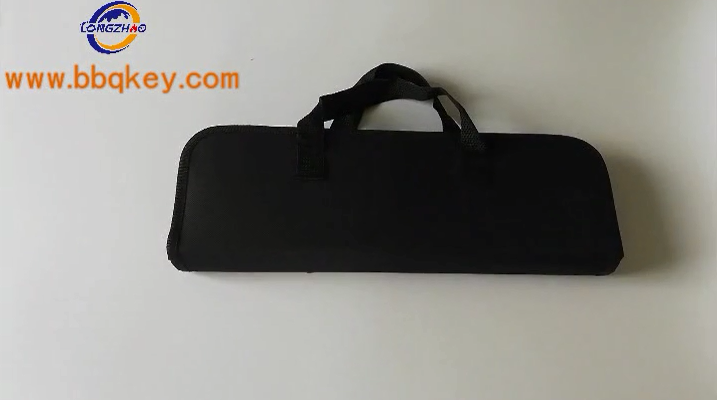How to Clean Up Safely After a Hurricane or Flood - portable butane gas bbq grill
by:Longzhao BBQ
2020-05-01

Hurricane Harvey is in the process of cleaning up in Texas and Luis Anna.Florida, Georgia and the Caribbean islands are just beginning to assess the damage caused by Irma, while the storm is heading north, flooding Charleston.C.The path to Hurricane Jose is still uncertain, but one thing is correct: if you are hit by any of them --Or some other storm.Cleaning up can be a nightmare and few resources tell you where to start.Storm cleaning is different from routine cleaning, even heavy cleaning.In addition to normal cleaning, there are hazards, health issues and other issues that require special products, tools and cleaning techniques, as well as protective equipment and safety measures that are not required in regular cleaning.Many properties will be completely lost after a major storm and flood, but often unexpected treasures can be recovered.Here are the guidelines for cleaning items that can be salvaged.After the flood, it may be daunting to dump the water and blow everything dry.In addition to the utility pumps for drainage, wet/dry vacuum cleaners such as ShopVac, and carpet and interior decoration cleaners manufactured by carpet doctors and bisoft, can be used without using a cleaning solution, extract moisture from hard surfaces (such as concrete and flooring) and soft surfaces (such as carpets and upholstery.For on-site cleaning, a good wet mop will be different, as suggested by the New York Times Company Wirecutter.Wirecutter also has a suggestion for you if you are willing to invest in a wet/dry vacuum.Safety is a problem when dealing with any power tools in flood areas, and if there is more than half an inch of water, you should avoid using machines like carpet doctors.Do not enter the flooded space unless you are sure the power is off.After the water is discharged or removed, the humidity will continue to exist, followed by mold, mildew and smell.Once the water is gone, the dehumidifier can help keep the air in a comfortable humidity until you can do a bigger repair.Portable air-Air conditioning equipment (except outdoor or ground)The installed central air-conditioning unit may be contaminated with silt) also helps to reduce the humidity and humidity in the home.If dehumidifier or air-The air conditioner provides this function using the "extra dry" setting.Both options are great when you get residual moisture from the wall or floor, or once you do these repairs, you can finish your home De-wetting.Carpet and upholstery cleaners can be used with pre-mixed odor-Remove the solution or diluted white vinegar (if permitted by the manufacturer's instructions) and remove the wet, moldy smell on the floor.Mold can be removed from a hard surface using bleach solution and a wash brush;The Centers for Disease Control and Prevention provide a reference guide for bleachto-Water ratio for disaster cleaning.Wear protective gloves and N-when cleaning the mold-95 (or better) masks, especially if you suffer from respiratory disease or weakened immune system.Goggles are also recommended.To treat moderate humidity and humidity, dry and odor absorber such as DampRid, silicone, bad air sponge and activated carbonBasic products are a good choice.It's also worth remembering that even with all these tips, you may still want to have a professional mold test for your home --It may not be enough even if individuals do their best, and you may need professional help.After Hurricane Katrina, for example, some people need to provide expensive antimicrobial spraying equipment for the entire family.Do your best to clean up and then keep an eye out for spots, smells or inexplicable coughs on the walls.Heavy dirty clothing needs special treatment, especially in cases where severe dirty is caused by floods.Make sure the water supply is clean and free from pollution before any cleaning is carried out, and your washing machine can be used safely.If not, go to the nearest laundromat or dry cleaner.If using a laundromat or a dry cleaner is an issue, check the company's disaster relief services such as Tide's wish plan or voluntary laundry service, just like a lady in your area (there are also men.Wirecutter has some budget if you do need to replace the washer and dryer --The suggestions here are very friendly.Prepare and choose toiletries by taking dirty, heavy laundry to the outside, washing off damp or muddy items with a hose, or putting them in a utility sink for pre-washingRinse if there is no outdoor space.Allow the item to dry, ideally in the sun to help prevent mold development, and then shake out any remaining dirt and mud to brush off after the initial rinse.To ensure the safe handling of contaminated textiles, wear gloves and consider the use of goggles and/or masks or respirator.The C.D.C.It is recommended to treat items exposed to sewage spills and groundwater runoff, as well as pillows, plush toys or clothes that have been in the flood for a long time.Washing machine instructions when cleaning heavily polluted textiles, it is important to check the water during the washing cycle to ensure the item is clean.In order to completely remove the soil and other contaminants, multiple washing cycles may be required.Many washing machines offer an extra washing cycle, which is helpful for those very dirty clothes or sheets.Delicate or retro items should be cleaned in a delicate cycle or by hand with very hot water (please wear protective gloves if you are washing your hands ).Boiling pots may require full disinfection of delicate items that cannot withstand the stirring of the washing machine, although you have the risk of shrinking them in this way.For sanitizing clothes or other clothing, use the hottest water settings that are safe for fabric types.If they can be used safely for laundry according to the manufacturer's instructions, please add pine oil disinfectant such as pine oil-At the beginning of the washing cycle, Sol or Lestoil, or a phenol disinfectant like Lysol or chlorine bleach.They may enter the dryer once your items are thoroughly cleanedBut not until then, because high temperatures leave stains on dirty textiles.To reverse the lingering tinger or yellowing, consider doing Engleside repairs, especially for antique or vintage textiles like quilts and ceremonial clothing such as baptism or wedding dresses, youFor your safety while working in wet conditions, please wear rubber or insulated shoes and, unless you are sure that the power is off, do not enter the flooded space.If your home has gas services, check for gas leaks before using the electrical equipment (including lights) in the home.If you have a gas grill, please have a professional check your jar before you try to use them again.The Environmental Protection Department recommends wearing gloves and other protective equipment after the event.Flood conditions including breathing apparatus and goggles.The same, AmericaS.Before you walk into the flood, the Consumer Product Safety Board has a safety guide to follow --damaged home.If you want to be brave enough to return home before the water is completely receded, this can only be done with the right equipment.Your protective gear should be suitable for the material you are going to process, such as heavy duty working gloves for the processing of debris, and polyurethane or PVC gloves for natural rubber, neoprene, or disinfectant such as chlorine bleach.Home gloves can be used when using more gentle detergents and cleaners.Snakes and other wildlife will also be watched, so be careful when working in flooded areas.The American Red Cross recommends using a wooden stick to turn over things that may harbor animals, and also suggests using a wooden stick to scare away snakes and potentially move --Charged wires.In addition, flooding and mud will make the floor smooth, resulting in slidingand-fall hazards.In terms of insurance claims, it is better to have photos or videos of the interior and exterior of the home, car, boat, etc.Before the damage occurs to show their previous condition.Whether or notStorm photos and videos are available and photos and videos that record damage should be taken before the cleanup work begins.Should be kept if there is a receipt.Taking photos of the item while receiving it makes it more likely that proof of loss provided to the insurance company will result in a successful claim.Additional reading: ■ C.D.C.Floods■ C.D.C.Mold cleaning and remediation ■ OSHA flood cleaning ■ Red Cross flood cleaning/safety tipsP.A.
Custom message








